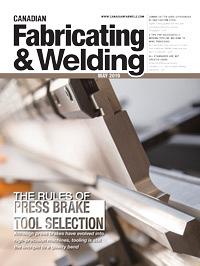Editor
- FMA
- The Fabricator
- FABTECH
- Canadian Metalworking
How mobile welding can make job sites more efficient and safer
Developers aim to make job sites more efficient, safer with mobile welder/generator upgrades
- By Rob Colman
- Updated May 18, 2023
- May 23, 2019
- Article
- Welding
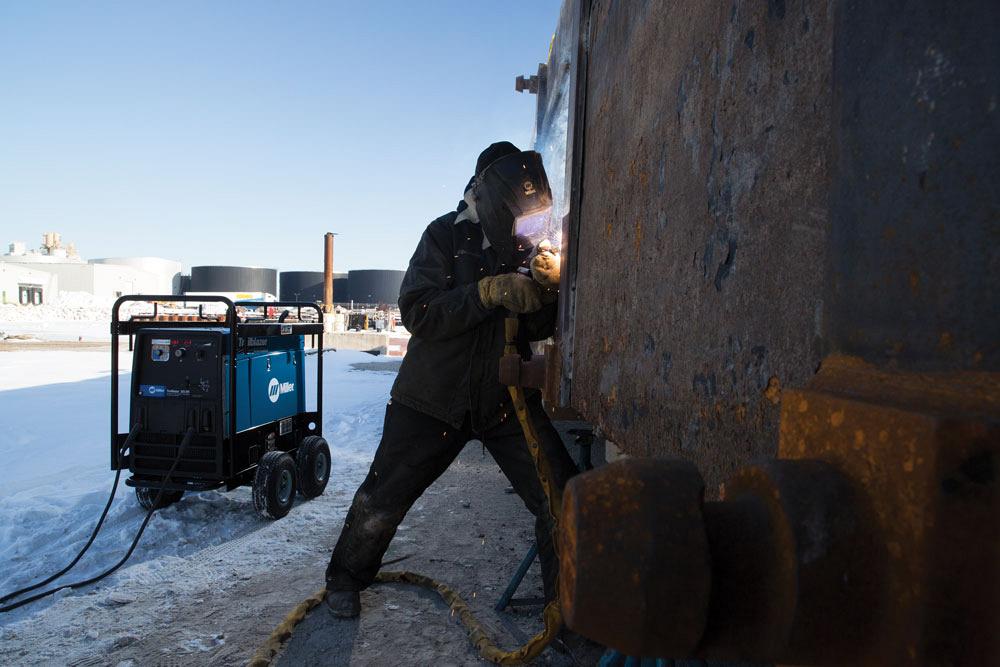
Mobile welding equipment is, of necessity, ruggedly built for work on building sites, pipelines, and other outdoor applications. But understanding that operators are constantly tight for space on their trucks and time in the field, manufacturers are doing what they can to improve the tools available on the job site.
Mobile welding equipment is, of necessity, ruggedly built for work on building sites, pipelines, and other outdoor applications. But understanding that operators are constantly tight for space on their trucks and time in the field, manufacturers are doing what they can to improve the tools available on the job site.
Quiet Running
In February Lincoln Electric® launched its new Ranger® 330MPX™ engine-driven gas-powered welding machine.
“What we wanted to do was create a smaller, smarter, quieter, and more powerful machine,” said Blair Vrcan, product manager, commercial engine drives. “The intent was to make it smaller and more portable. We did that. It is up to 31 per cent smaller in volume, up to 20 per cent smaller in footprint, and up to 25 per cent lighter than our previous model in this series. These machines can weigh over 400 lbs., so we wanted to make it as easy as possible to manouevre it on an undercarriage, or simply provide more room for more machines or accessories on a truck bed.”
Noise was also something else that the team took into consideration.
“It’s 60 per cent quieter than previous models,” said Vrcan. “We engineered a muffler specifically for this machine to reduce the decibel levels.”
Clear Direction
Another key aspect of being out in the field is being able to keep working steadily, and the user interface (UI) is a big part of that.
“There are end users who might weld twice a week and others who might weld eight hours a day,” said Vrcan. “The UI has multiple screens that can assist a welder of any experience. When you select the 'Ready. Set. Weld(R)' button, you can select your electrode size and type and your plate thickness, and the UI will show you the proper setup as well as provide you the parameters you can use to start welding. You also have the capability to set specific weld preferences, such as arc force, found in the advanced weld options on the UI. The UI also includes ArcFX(TM) technology, which shows you through images how changing your weld settings will affect your penetration and the characteristics of the arc.
“You can make that adjustment in the options menu before you start your weld,” said Vrcan.
The new machine also can directly connect to the new Magnum® Pro 250-LX GT spool gun so there’s no need for additional control modules or adapters in that respect.
“We know that operators using this type of system are going to be welding different processes,” he said. “This saves on setup time for those jobs that require a spool gun, like welding aluminum.”
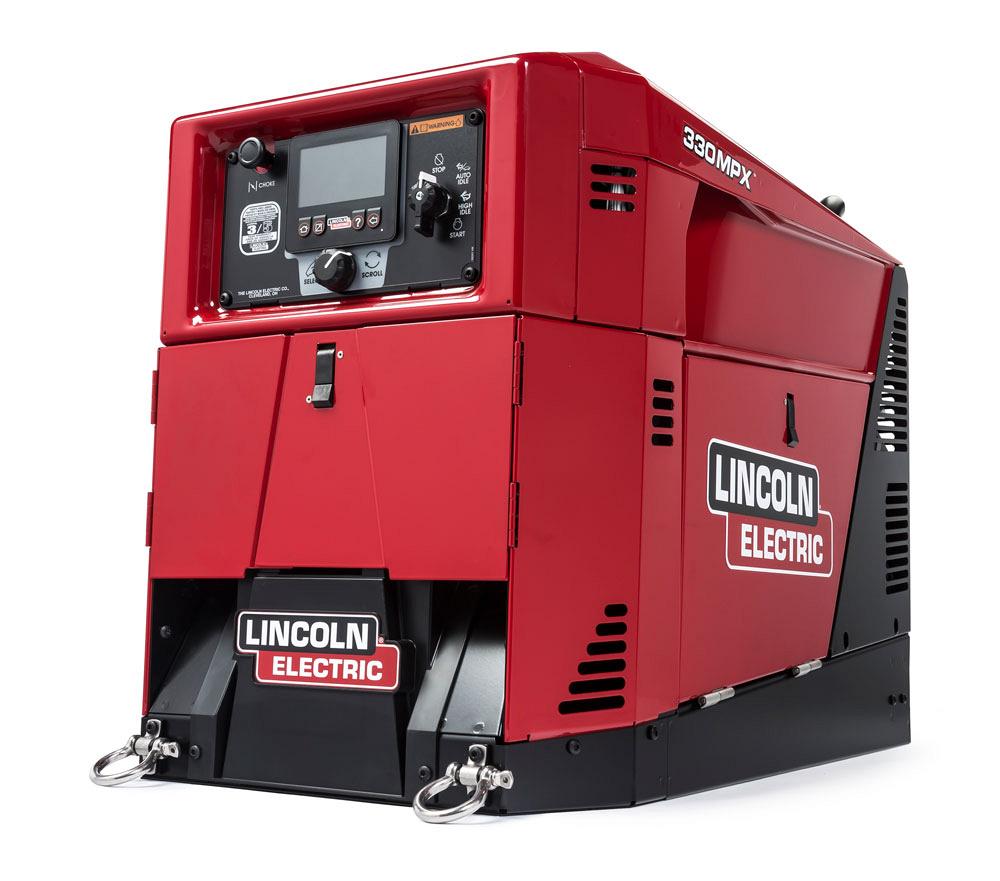
In February Lincoln Electric® launched its new Ranger® 330MPX™ engine-driven gas-powered welding machine/generator. It was designed to be a smaller, smarter, quieter, and more powerful machine than earlier models.
Consistent Wire Feeds in Mobile Welding
Controlling wire feed speeds at the weld can be a challenge, but again this is something that product developers have been tackling. ACTIV8X™ is one such system.
“This wire feeder is 28 lbs. without wire, so comparatively portable in the field,” said Wayne Chuko, Lincoln Electric’s product manager for industrial inverter power source lines. “Using CrossLinc™ technology, you can control your wire feed speed and voltage at your point of welding. Now you can adjust feed speed and voltage without having to take an initial guess at what your voltage should be and adjust it at the power source. It avoids having to run back and forth to the power source to change parameters from, say, a down-hand weld to a vertical weld or a tack weld to a fill pass.”
Included in this release is True Voltage Technology ™ (TVT™), which ensures you get the voltage you set at the arc, even when you are hundreds of feet away from the power source.
“The technology automatically adjusts for the inevitable voltage drops you get due to electrical resistance,” said Chuko.
“All of these technologies mean that you can spend more time at the weld instead of running back and forth to your welding machine. That can add up to significant amounts of time and money. It’s also a big safety factor. Any time you’re walking across a work site, there’s always a chance of getting hit by something or tripping or falling. If you’re putting a building together, it might involve climbing down from a building. If you are able to stay at your job, there are fewer opportunities for injury.”
Mobile Welding Power Management
One issue that the Miller Electric Mfg. team has looked at in its Trailblazer® line of engine-driven machines is managing fuel use.
“We want to increase efficiency and reduce downtime on the job site,” said Jake Zwayer, product manager for Miller. “Excel™ power is one way in which we attempt to do that. This technology makes it possible to get 2,400 W of auxiliary power while the machine remains at idle. With a typical welder/generator, when you plug something in, the machine will go to its maximum engine speed, which is where your fuel consumption is highest, your noise is loudest, and you’re running the least efficient. Excel power makes it possible to generate only the power you need for the task at hand. For instance, if you wanted to plug in a cell phone, a grinder, or a set of lights, the generator would continue to run at 2,400 rpm. The operator gets the power needed without overworking the machine, saving fuel, reducing noise, and extending the life of the asset.”
A similar technology, called Auto-Speed™, does the same when you are welding. The technology responds to weld requirements by automatically adjusting engine speed to one of four or five RPM levels so the engine doesn’t work harder than necessary.
“If you are welding with a 1/8-in. stick electrode, you’re typically setting up the welder between 100 and 130 amps, and on a machine like the Trailblazer 325 Diesel, you can weld up to 135 amps at idle. This means that a majority of the run time will be at idle where fuel efficiency is maximized and noise is drastically reduced,” said Zwayer. “Looking at a typical-use case, you could see an increase of several hours in run time on a single tank of fuel.”
Point-of-Use Control
The company has also added its ArcReach® and Dynamic DIG™ technologies to its Trailblazer and Big Blue® lines. ArcReach technology gives you point-of-use control from the feeder or whip so that it’s unnecessary to walk back to your power source to make amp, voltage, process, and wire feed speed adjustments.
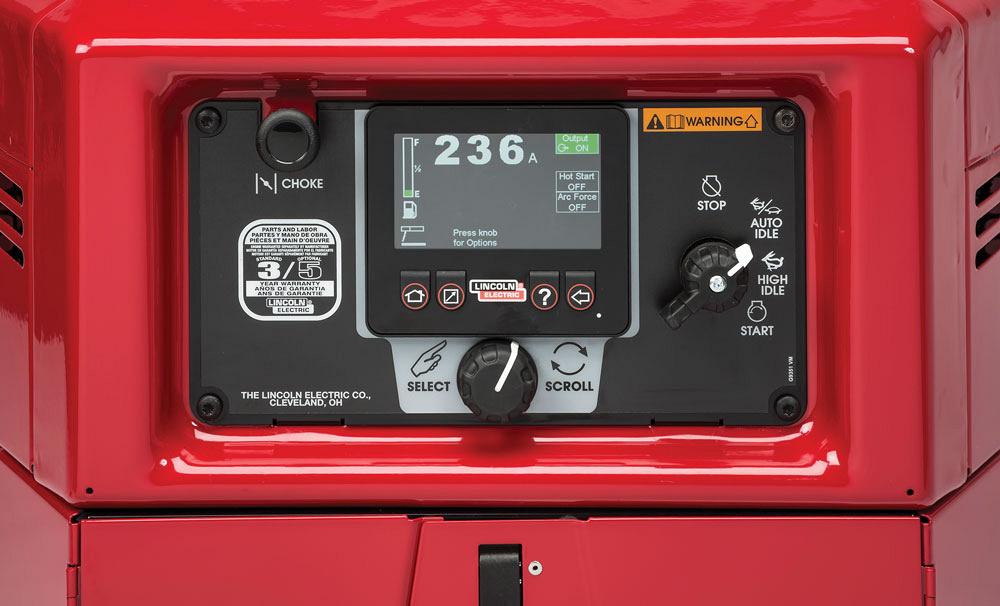
A key aspect of being out in the field is being able to keep working steadily, and the user interface (UI) is a big part of that. The UI has a help screen that can assist a welder of any experience.
“If you are working 200 ft. from your power source and you have to gouge out a crack in an old weld and then reweld to repair it, you can do it all without returning to the welder, which saves time and ultimately increases the efficiency of skilled workers,” said Zwayer. “The time savings can be pretty drastic too. People don’t realize how much time is spent just walking back to the power source on some jobs. Even eliminating a portion of that is going to affect your bottom line.”
More than just money savings, however, is the additional safety added by eliminating movement on the job site. “Minimizing the walking that takes place on job sites minimizes the opportunities for slips, trips, and falls,” said Jim Byrne, manager, application/sales for pipe welding products at Miller.
Dynamic DIG technology, meanwhile, is designed to deliver a smoother, more consistent arc that can be tailored to match an application, material, fit-up, or welder technique.
“This is something that was developed out of our desire to really support pipeline welders and their needs,” said Zwayer. “We collaborated with professional pipeline welders by bringing them in-house to better understand what they wanted to see in the arc and what kind of control they needed during the weld. Dynamic DIG makes it possible for you to change how crisp or soft you want the arc to be, as well as its responsiveness. What welding arcs have lacked in the past was the ability to get the drive welders wanted while also having enough response through the arc to adjust for changing joint conditions caused by things like bad fit-up. If you are welding on a downhill pipe joint and the root gap starts to close in, you’re going to want more drive, more penetration, and are going to want to put pressure on the rod and ensure you get back-side penetration. With Dynamic DIG, you’re going to get this response as pressure is applied without snuffing the arc out. If the joint starts opening up and a softer arc is desired to fill gaps, increasing arc length can help achieve these conditions. We’re giving welders the ability to adjust the arc based on what they’re seeing in the joint as they go. When starting a joint it may be perfectly fit up, but as it’s heated and you start getting expansion or contraction, you need the ability to adjust to those changes.”
Like the other technology examples here, this feature allows you to make faster welds and spend less time making repairs. More uptime on the machine, less movement on the job site – it all means a potentially safer, more productive operation.
Editor Robert Colman can be reached at rcolman@canadianfabweld.com.
Lincoln Electric Co., www.lincolnelectric.com
Miller Electric Mfg. LLC, www.millerwelds.com
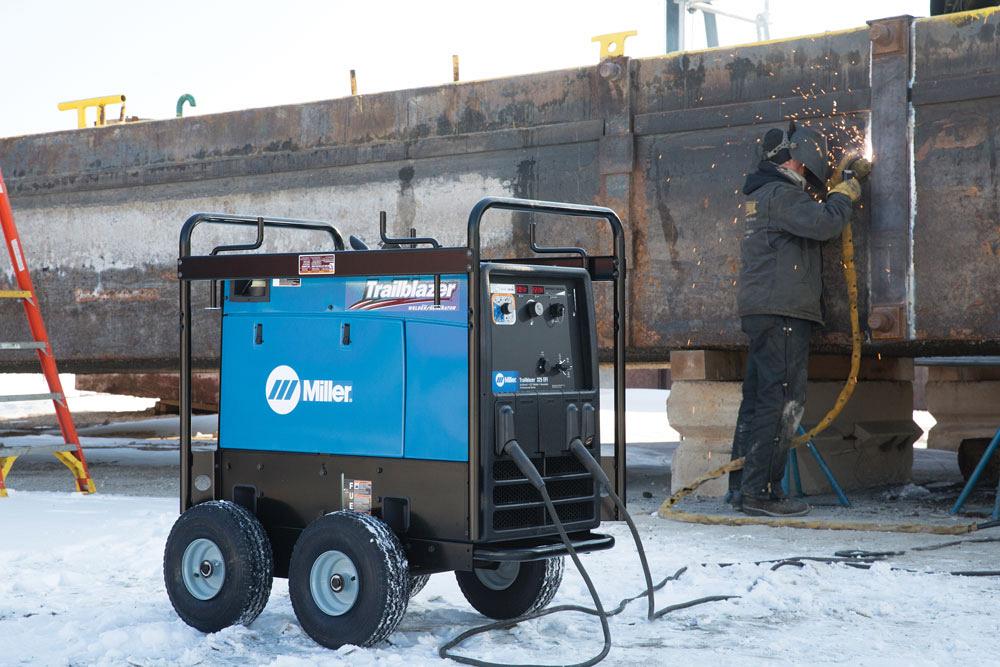
One issue that the Miller Electric Mfg. team has looked at in its Trailblazer® line of engine-driven machines is managing fuel use. The team wanted to increase efficiency and reduce downtime on the job site. Its Excel™ power technology is one way in which they attempt to do that. This technology makes it possible to get 2,400 W of auxiliary power while the machine remains at idle.
About the Author

Rob Colman
1154 Warden Avenue
Toronto, M1R 0A1 Canada
905-235-0471
Robert Colman has worked as a writer and editor for more than 25 years, covering the needs of a variety of trades. He has been dedicated to the metalworking industry for the past 13 years, serving as editor for Metalworking Production & Purchasing (MP&P) and, since January 2016, the editor of Canadian Fabricating & Welding. He graduated with a B.A. degree from McGill University and a Master’s degree from UBC.
subscribe now


Keep up to date with the latest news, events, and technology for all things metal from our pair of monthly magazines written specifically for Canadian manufacturers!
Start Your Free Subscription- Trending Articles
CWB Group launches full-cycle assessment and training program

Achieving success with mechanized plasma cutting

3D laser tube cutting system available in 3, 4, or 5 kW

Brushless copper tubing cutter adjusts to ODs up to 2-1/8 in.

Welding system features four advanced MIG/MAG WeldModes
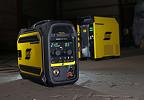
- Industry Events
MME Winnipeg
- April 30, 2024
- Winnipeg, ON Canada
CTMA Economic Uncertainty: Helping You Navigate Windsor Seminar
- April 30, 2024
- Windsor, ON Canada
CTMA Economic Uncertainty: Helping You Navigate Kitchener Seminar
- May 2, 2024
- Kitchener, ON Canada
Automate 2024
- May 6 - 9, 2024
- Chicago, IL
ANCA Open House
- May 7 - 8, 2024
- Wixom, MI













